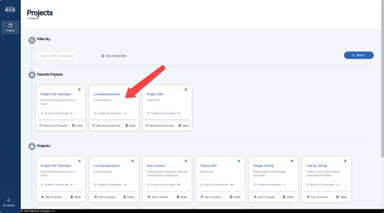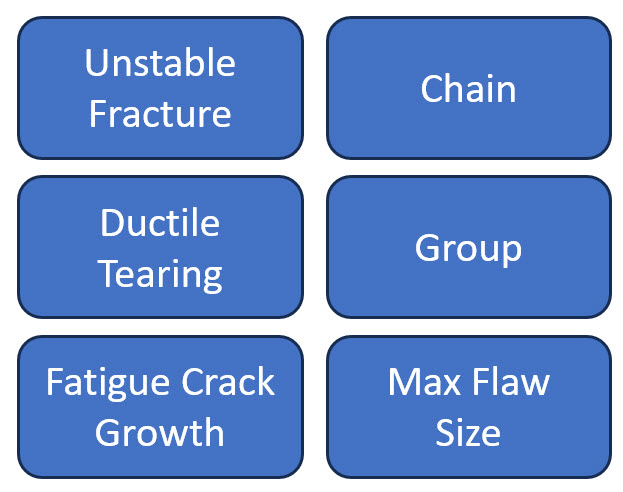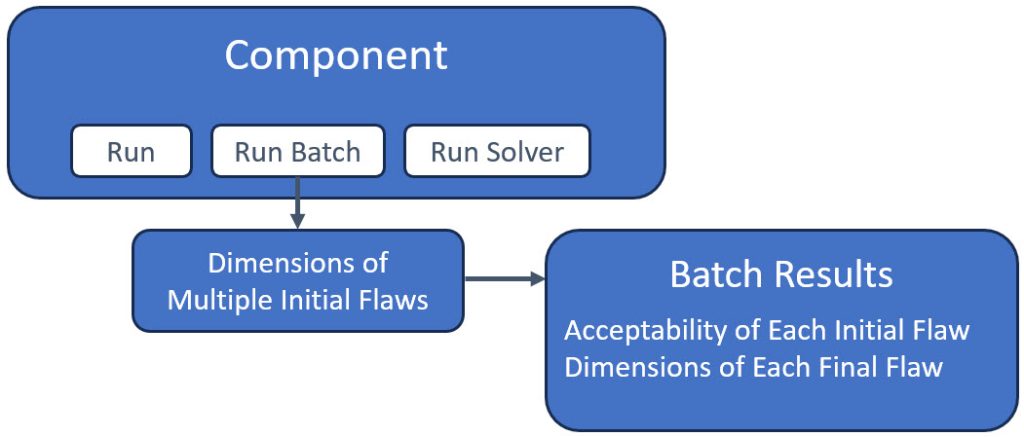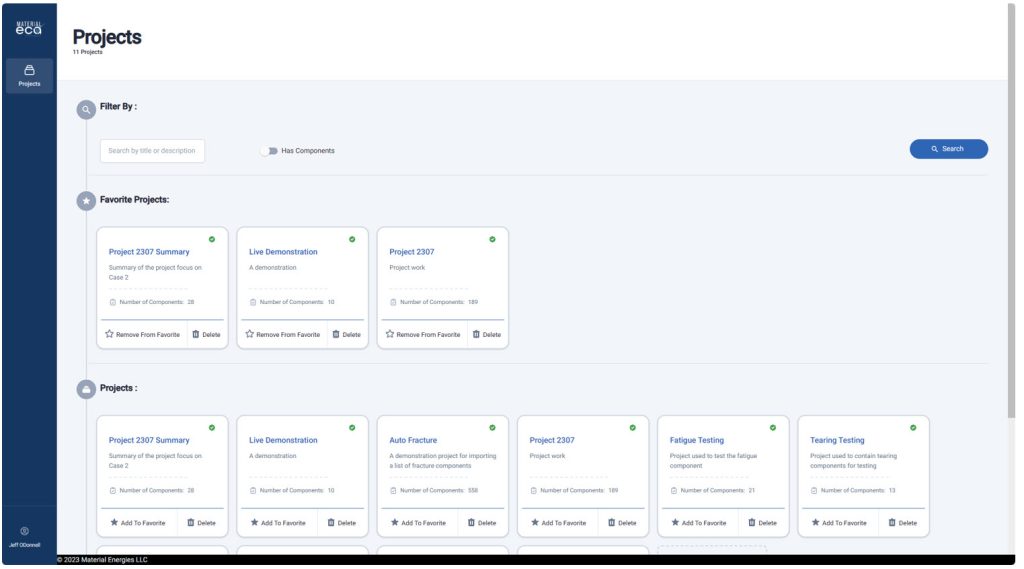Introduction to Material ECA

This article introduces the Material ECA Platform, including the following:
- The approach taken by the Material ECA web application to assess crack-like flaws
- How the Material ECA Platform is organized
- A brief tour of the Project page, which is the landing page upon logging in
The Material ECA Approach | Componentized Functionality
Fracture Mechanics Functionality and Utilities Are Encapsulated as Components
Specific fracture mechanics functionality, such as unstable fracture, ductile tearing, and fatigue crack growth, and utilities, such as Chain and Group, are organized as Components with common properties and actions. Functional Components include all input needed to assess a crack-like flaw’s growth and acceptability, except the initial flaw’s dimensions, which are provided separately. Utility Components provide flexibility and speed to enable fast and reliable, full-lifetime ECAs.

Running An Initial Flaw
When a Component is Run, the User provides the dimensions of an initial crack-like flaw. The results include the acceptability of the initial flaw, the dimensions of the final flaw, and the detailed results.
Running Multiple Initial Flaws
A Component can run as a Batch, such that the User inputs the dimensions of multiple initial crack-like flaws. The results include the acceptability and the growth of all the initial flaws.
Running the Critical Initial Flaw Solver
A Component can run the Solver, where a list of the critical initial crack-like flaws is returned.
Geometry Type Property
All Components have a Geometry Type property, which describes whether the geometry is a flat plate, pipe, cylinder, or round bar, and the location and orientation of the crack-like flaw.
Utility Components
The utility Components provide unmatched flexibility, enabling Users to innovate better ECAs. Chain and Group Components contain other Components and can be run like other Components. For a Chain Component, the added Components are run in series – one after the other – such that the final flaw from one Component is the initial flaw for the next. For a Group Component, the added Components are run in parallel, each having the same initial flaw, but the final flaw is the largest that returns from any of the added Components. For both, if any added Component is unacceptable, the Chain or Group Component is unacceptable. Chain and Group Components can be nested inside other Chain and Group Components up to 3 levels. Components added to a Chain or Group Component must all have the same Geometry Type.
Example of Components Nested in a Chain Component
The following figure illustrates a Chain component representing the lifetime of a portion of a deepwater riser system. The lifetime chain contains two fatigue components representing two phases of fatigue crack growth assessment, a nested group component containing several fracture calculations representing several potential end-of-life fracture events, and a nested chain component containing several ductile tearing components and a fatigue component representing riser installation.
Encapsulating functionality as Components provides expandability. When first deployed, Material ECA included unstable fracture, ductile tearing, and fatigue crack growth based on the methods described in BS 7910:2019. Our plans include adding analogous Components based on the methods of API 579. Moreover, Components addressing other fracture mechanics functionality, such as environmental cracking or creep crack growth, can be similarly added.
Platform Organization | Collaborative, Stable, and Secure
Components and results are contained inside Projects. Projects organize related components and results and form the basis for collaboration. When a User creates a new Project, he or she can share it with co-workers, clients, third-party reviewers, etc., to improve teamwork, workflow visibility, and the quality and timeliness of feedback. Collaboration helps periodic review meetings become much more productive and reduces the time needed to address feedback.
A Tour of the Material ECA Projects Page
The Material ECA Projects Page
Upon logging in, the User is brought to the Projects page.
The Project page displays all the projects the User has authorization to access. This includes the projects the User has created and those created by others to which the other User has been granted access. Clicking on a Project will open it. New Users will initially have no Projects to access.
The User can filter the projects displayed by keywords and designate projects as a Favorite for easy access.
The menu bar on the left side is always present. Clicking on the Projects icon on the top will return the User to this Projects page. Clicking on the Username at the bottom will display a form allowing the User to edit his or her username, password, and other contact information.
The next article will describe Material ECA Projects.
Next Article: Material ECA Projects | Organizing and Collaborating
Last Updated: 31 March 2024





